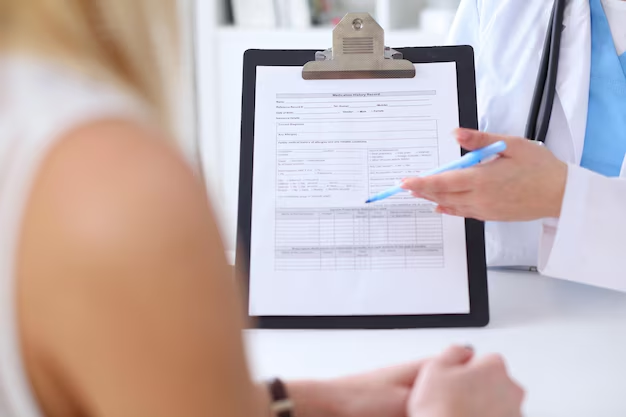Understanding Medicare PDP: What You Need to Know
Navigating the complexities of Medicare can often feel overwhelming, but understanding its components is crucial for making the most of your healthcare coverage. One of these key components is Medicare Part D Prescription Drug Plan (PDP). This program is designed to help cover the costs of prescription medications, offering significant financial relief to millions of beneficiaries. Here's everything you need to know about Medicare PDP and how it can benefit you.
What is a Medicare PDP?
A Medicare Prescription Drug Plan (PDP) is a stand-alone drug plan that adds prescription drug coverage to Original Medicare, some Medicare Cost Plans, some Medicare Private Fee-for-Service Plans, and Medicare Medical Savings Account Plans. Unlike other parts of Medicare, which cover hospital and medical expenses, PDP specifically helps manage the costs of your prescription medications. This can be a game-changer for individuals with chronic conditions requiring ongoing medication or those facing high drug costs.
How Does Medicare PDP Work?
Medicare PDPs are offered by private insurance companies approved by Medicare. Each plan has its own list of covered drugs, known as a formulary, which is divided into tiers that delineate costs. Higher-tier medications generally come at a higher out-of-pocket expense. It’s important to review the formularies of available plans to ensure your prescriptions are covered at a manageable cost.
Enrollment and Eligibility
To enroll in a Medicare PDP, you must already be enrolled in Medicare Part A or Part B. Enrollment periods include:
- Initial Enrollment Period (IEP): Begins three months before the month you turn 65 and ends three months after that month.
- Annual Enrollment Period (AEP): From October 15 to December 7, during which you can join, switch, or drop a plan.
- Special Enrollment Periods (SEP): Offered under certain circumstances, like moving out of your plan’s service area.
Timely enrollment is crucial to avoid paying a late enrollment penalty for not joining a plan when you’re first eligible.
Advantages of Medicare PDP
Investing in a Medicare PDP can significantly ease the financial burden of prescription drugs. The plans generally cover a wide range of medications and are designed to provide:
- Cost Savings: Reduces the cost of medications, particularly for individuals with high prescription drug needs.
- Pharmacy Networks: Access to lower prices through a network of pharmacies.
- Protection from High Costs: Limits out-of-pocket expenses with various coverage stages, including the catastrophic coverage phase where costs are further reduced.
Beyond PDP: Exploring Financial Assistance
Healthcare costs can add up quickly, even with a PDP, but there are additional resources available to help manage these expenses. Here are some government and financial assistance options to consider:
- Medicare Savings Programs: These help individuals with limited income pay Medicare premiums, deductibles, and copayments.
- Extra Help: This program assists with Part D costs for those who meet certain income and resource limits.
- State Pharmaceutical Assistance Programs (SPAPs): Offer additional drug coverage benefits to eligible residents.
Broader financial management options, such as debt relief programs, credit card solutions, and personalized financial planning services, can also provide much-needed support in managing healthcare expenses.
Opportunities for Higher Education and Financial Support
Beyond healthcare, investing in educational opportunities can lead to better financial security. Look for:
- Grants and Scholarships: There are numerous grants available for individuals returning to school, helping can help reduce the burden of tuition fees.
- Government Aid Programs: Programs like the Pell Grant offer substantial assistance to eligible students.
- Credit Counseling Services: Help manage existing debts and create a sustainable financial plan for the future.
By taking advantage of the myriad of programs available, you can navigate the complex landscape of healthcare and personal finance with greater confidence and security.
Key Programs and Resources for Financial Assistance
- 💊 Medicare Savings Programs: Help cover costs for Medicare enrollees
- 💸 Extra Help for Part D: Covers prescription drugs under Part D for lower-income individuals
- 🏥 State Pharmaceutical Assistance Programs: Additional local drug benefits
- 💳 Credit Counseling Services: Assistance with managing bills and credit card debt
- 🎓 Educational Grants and Scholarships: Financial aid opportunities for advancing education
- 🌟 Government Debt Relief Options: Programs to assist with managing overall debt
Exploring these resources can significantly enhance your financial outlook and affordability of healthcare, making life more manageable. These tools aren't just about making ends meet—they're about building a better, more secure future.

Related Topics
- Am I Elgible For Medicare
- Am I Enrolled In Medicare
- Am I Qualified For Medicare
- Are Adult Diapers Covered By Medicare
- Are Chemotherapy Drugs Covered By Medicare Part d
- Are Colonoscopies Covered By Medicare
- Are Covid Tests Covered By Medicare
- Are Cpap Machines Covered By Medicare
- Are Cpap Supplies Covered By Medicare
- Are Dental Implants Covered By Medicare